
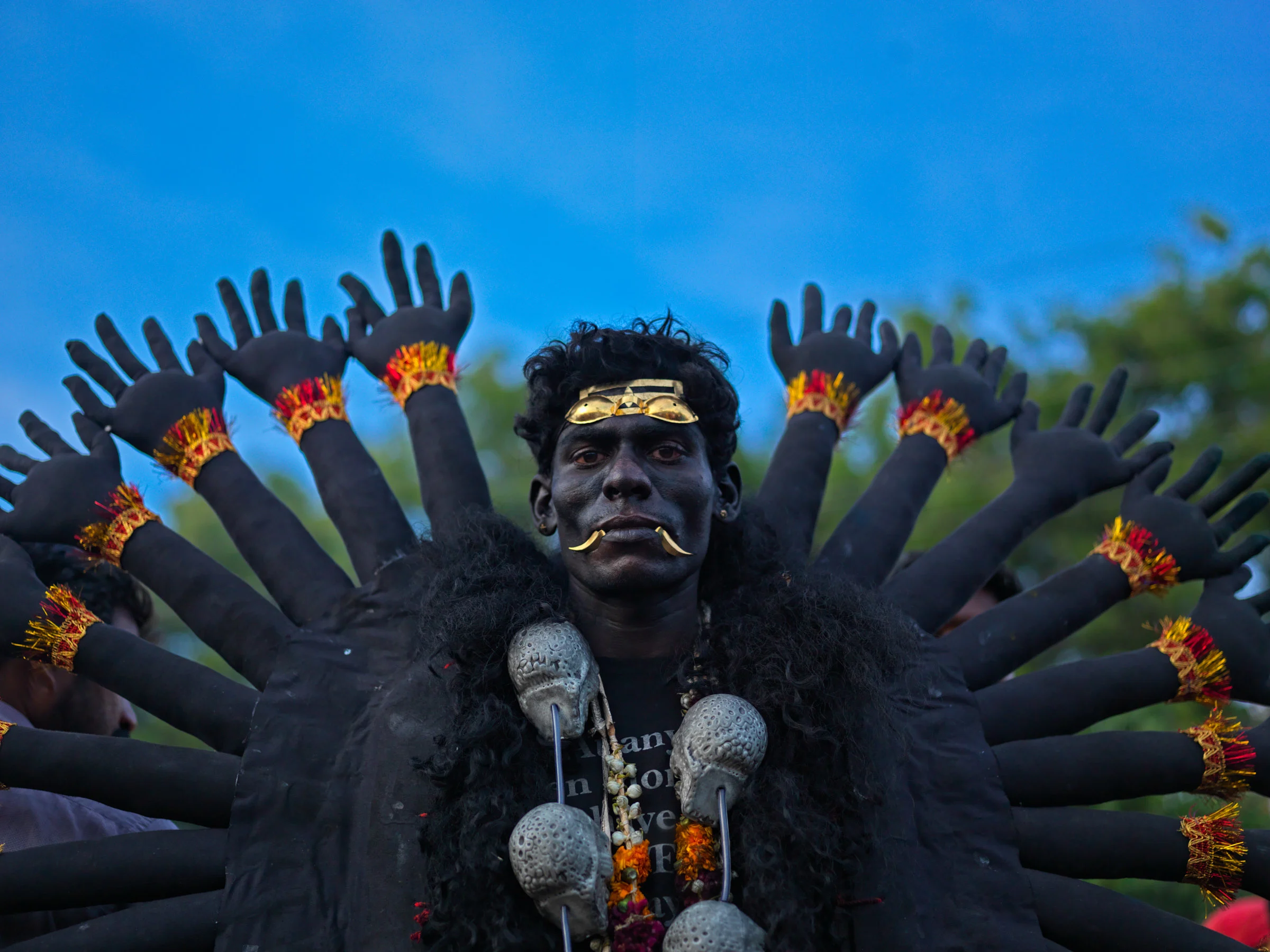
For most of the year, the remote coastal town of Kulasekharapatnam, in the south Indian state of Tamil Nadu, is a quiet place. Commonly known as Kulasai, it attracts no great number of foreigners nor curious travellers from other parts of the country. But each October, the town is briefly reanimated, as more than 1.5 million visitors descend to mark the final day of the Navratri – the Hindu “Festival of Nine Nights” celebrating the triumph of Durga, goddess of war, over the shape-shifting demon Mahishasura. Writer Allyssia Alleyne speaks to photographer Kriator about what he captured during a visit.
The Navrati is the moment of release following nine days and nights of excitement and worship. Depending on local traditions, this can mean dancing or reflecting, feasting or fasting, exchanging gifts or giving alms. On the 10th day, called as Dussehra or Vijayadashami, revellers of all ages and genders set off for the 300-year-old Sri Mutharamman Temple at the heart of Kulasai, in a convoy that feels at once modern and ancient. In costumes ranging from the modest to the astoundingly complex, they offer prayers to the resident goddess, Mutharamman, collect donations from pious locals to pay for incurred expenses, and engage in ritual and celebration long into the night.

In 2019, Mumbai-based portraitist and fashion photographer Krishna Iyer, who works under the professional name Kriator, travelled to Kulasai to witness and document the festivities. He can still recall the “cinematic carnival” in vivid detail: the roaring of musical instruments, the smoke emanating from hand-held clay pots, and the heat of all of those bodies, trudging together under the baking sun. But he was especially struck by the costumes, specifically made ensembles created just for the occasion. “The colors, the detail and the sheer fusion of incredible items left me spellbound each time I passed a new convoy,” he says. “It just shakes you down to your spine.”
In his Pilgrims of Kulasai portrait series, Kriator captured just a sliver of the craftsmanship that surrounded him, most of which transformed the wearers into characters from Hindu mythology: A man in a plastic monkey mask masquerades as the god Hanuman; a child with his face painted blue sits in as the serene Hindu God Krishna. However, there are rare touches of pop culture too. In one photo, a man shows off a Joker-style slick of red, extending his mouth into a twisted smile.
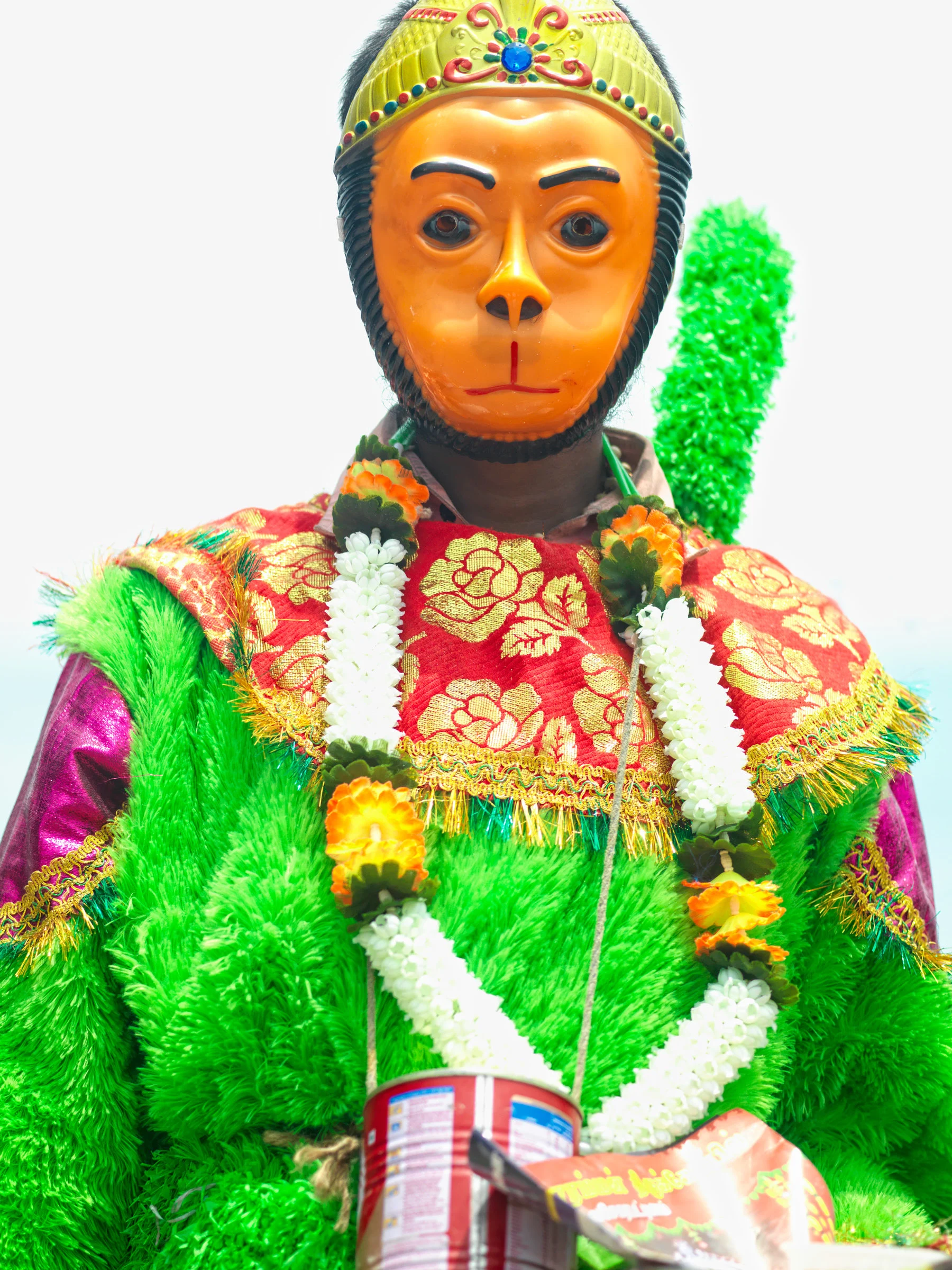
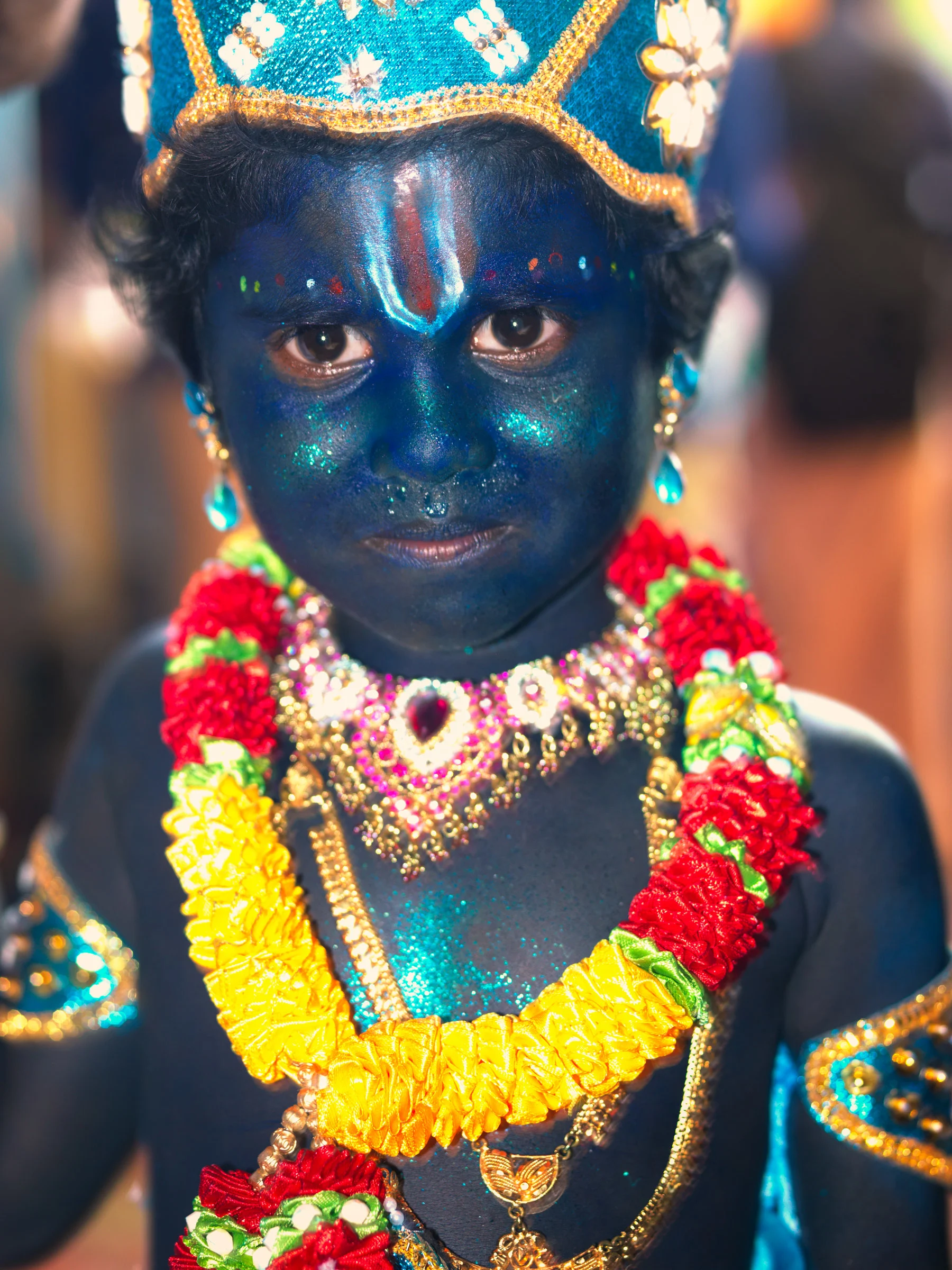
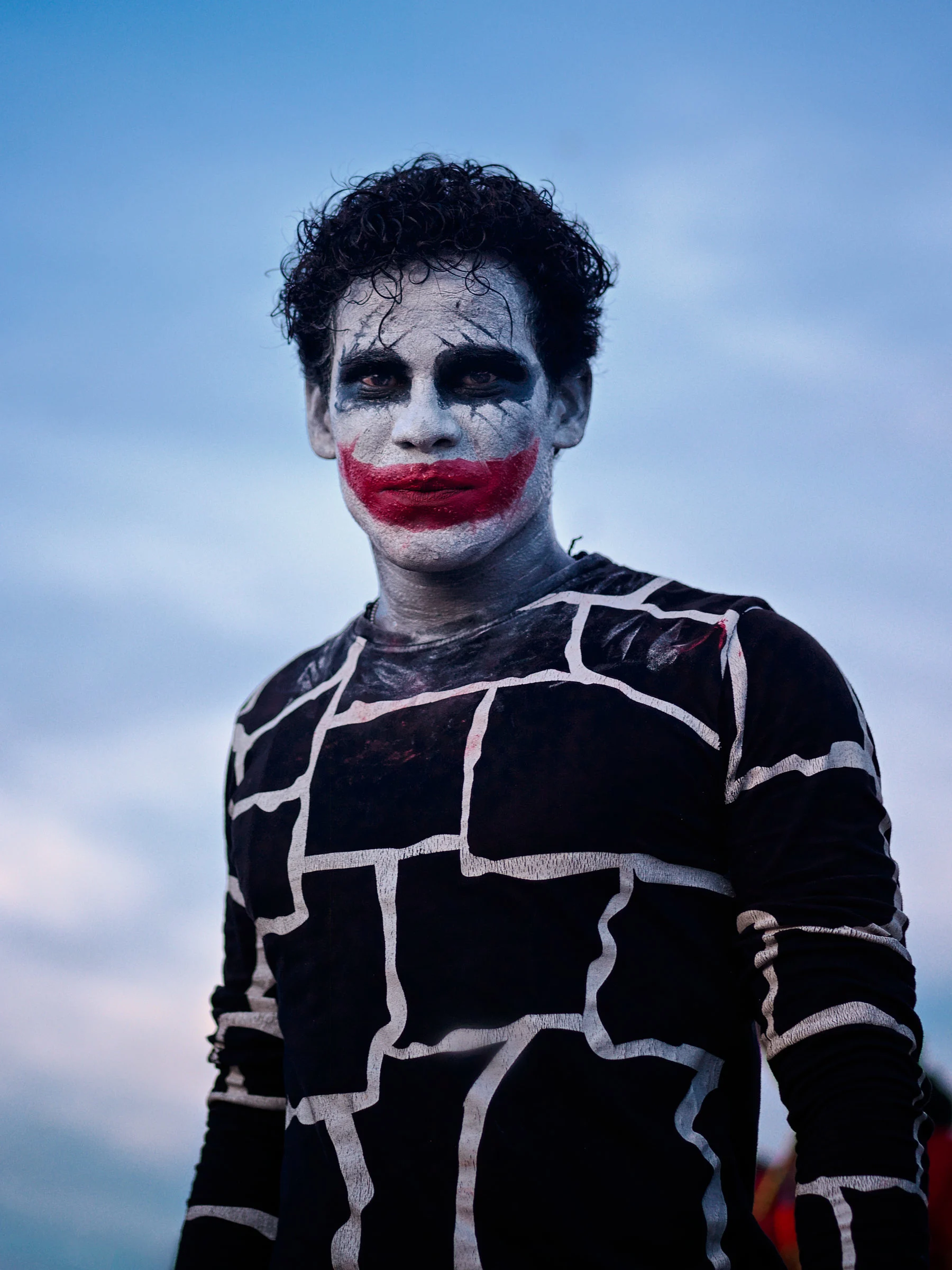
But the most ambitious take on the form of the many-armed Goddess Kali, who, with long, lolling tongue, garland of human skulls and fiery eyes, is the living embodiment of Durga’s fury. Kriator captured a rainbow of imitators in blue, purple, red and green, decked out in wigs of black curls, faux fangs and fake limbs. One man, taking things a step further, rides what looks like a homemade lion, and clutches a foil sword – two of Kali’s symbols.
In Kriator’s favorite image, a man with his body painted black and 20 bangled arms strapped to his back casts an unflinching gaze directly at the viewer, all the while holding a lit cauldron in one hand. “Anyone with less perseverance and will power would simply cave in,” he says. “His rather stocky constitution also throws in a terrific and totally contrasting text to the goddess narrative.”
The colors, the detail and the sheer fusion of incredible items left me spellbound each time I passed a new convoy.
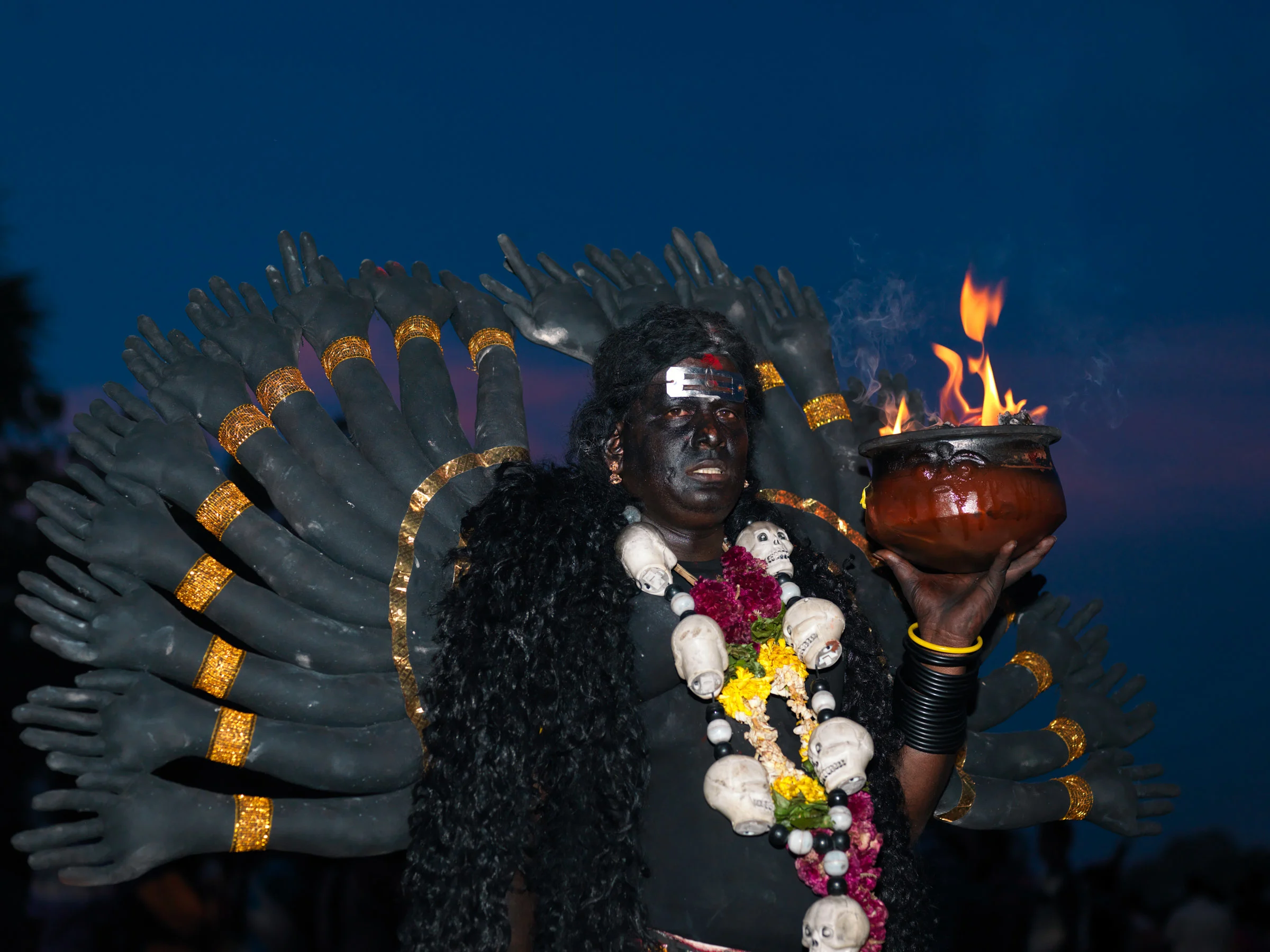
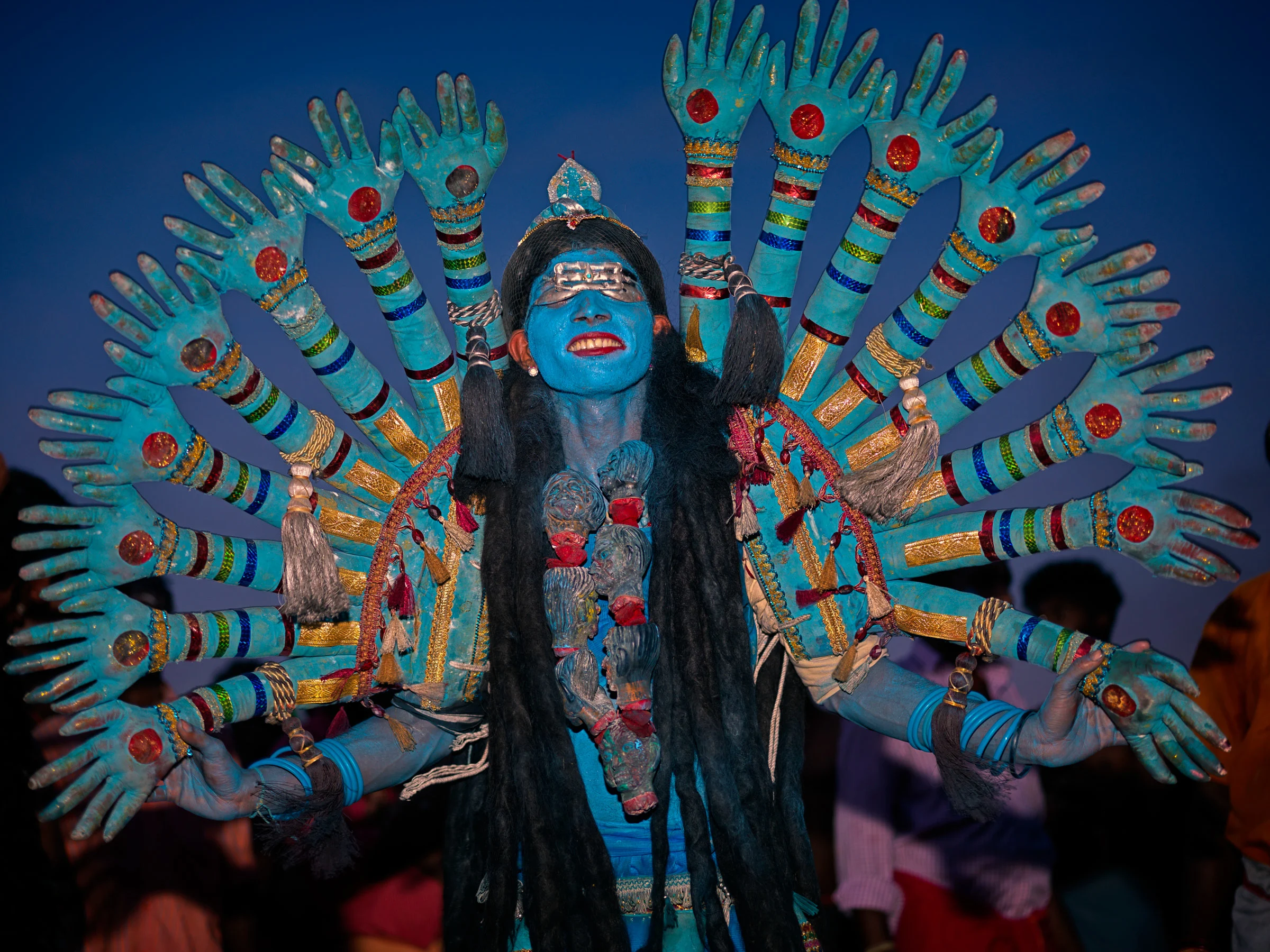



Kriator first learned of the pilgrimage in 2018, while researching a creative pitch for a potential client. As discussions dragged on and the commission began to look less and less likely, he decided to visit on his own anyway. “I got so personally drawn to this social phenomenon, that I really felt the urge to witness it firsthand,” he explains.
After making the expensive journey from Mumbai, he was astonished by the spirit of devotion, the artistry of the costumes, and the sheer scale of things. “Such larger-than-life, spectacular experiences are hard to come by in the mundane wheel of everyday existence,” he says. “I couldn't even enter the temple that time – the queues were way too long – so I decided to return in 2019, not just to capture more images, but to seek blessings as well.”
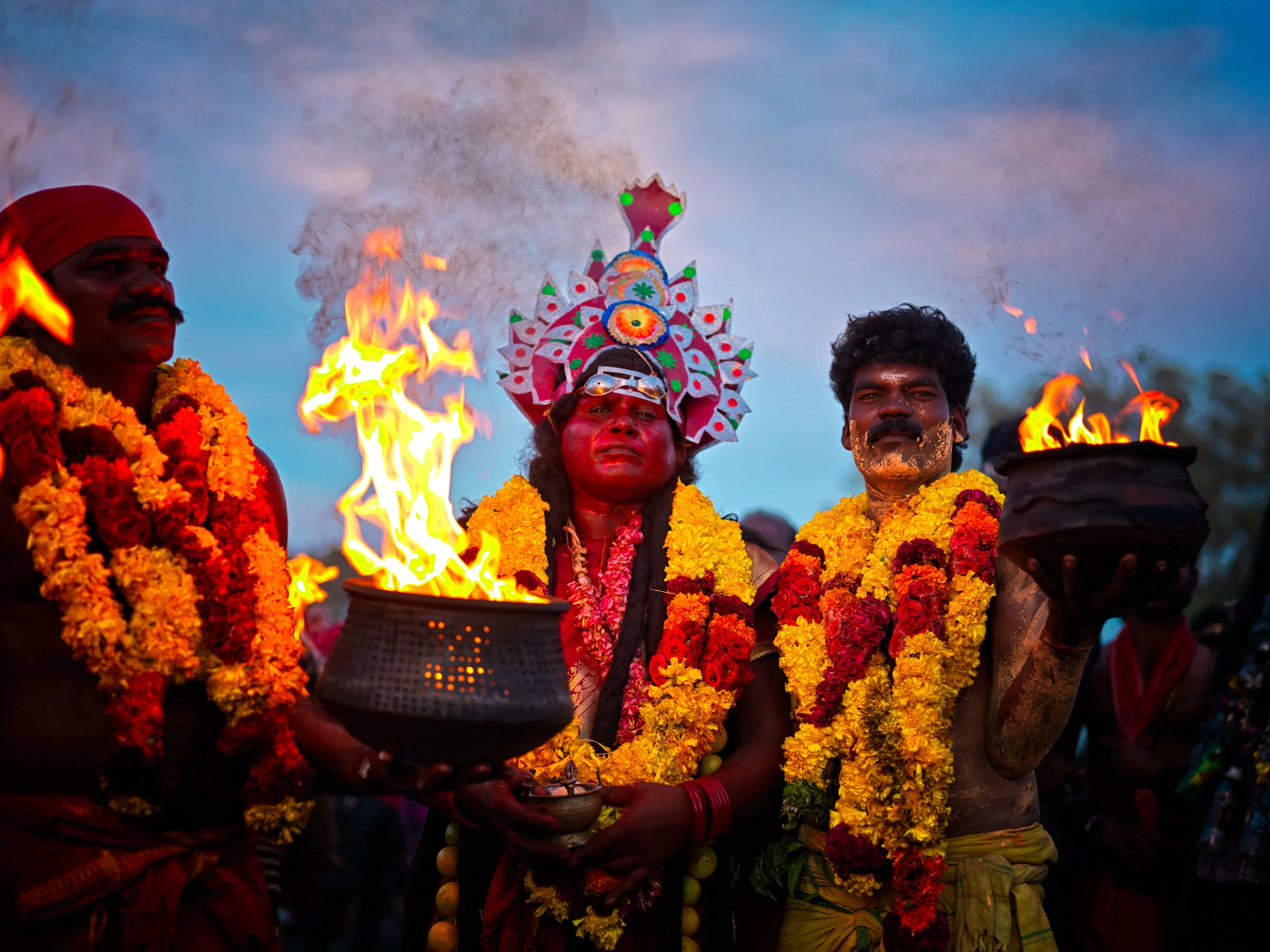
Pilgrims of Kulasai is a striking departure from Kriator’s usual projects. A former ad man with a fondness for Richard Avedon and Annie Leibovitz, Kriator’s usual remit is more conventional staged portraiture and fashion photography. Shooting people so deeply absorbed in a religious experience, he quickly discovered, would present new challenges.
“The devotees are all charged up within. Most of them will never ever respond to your call for a click. It's like they’re in a trance,” he says. Also, he adds, “Not everyone is amused at the thought of being photographed. Unlike at Mardi Gras, where it’s mostly fun and frolic for the revellers, this is more an act of reverence, and one needs to respect that.”
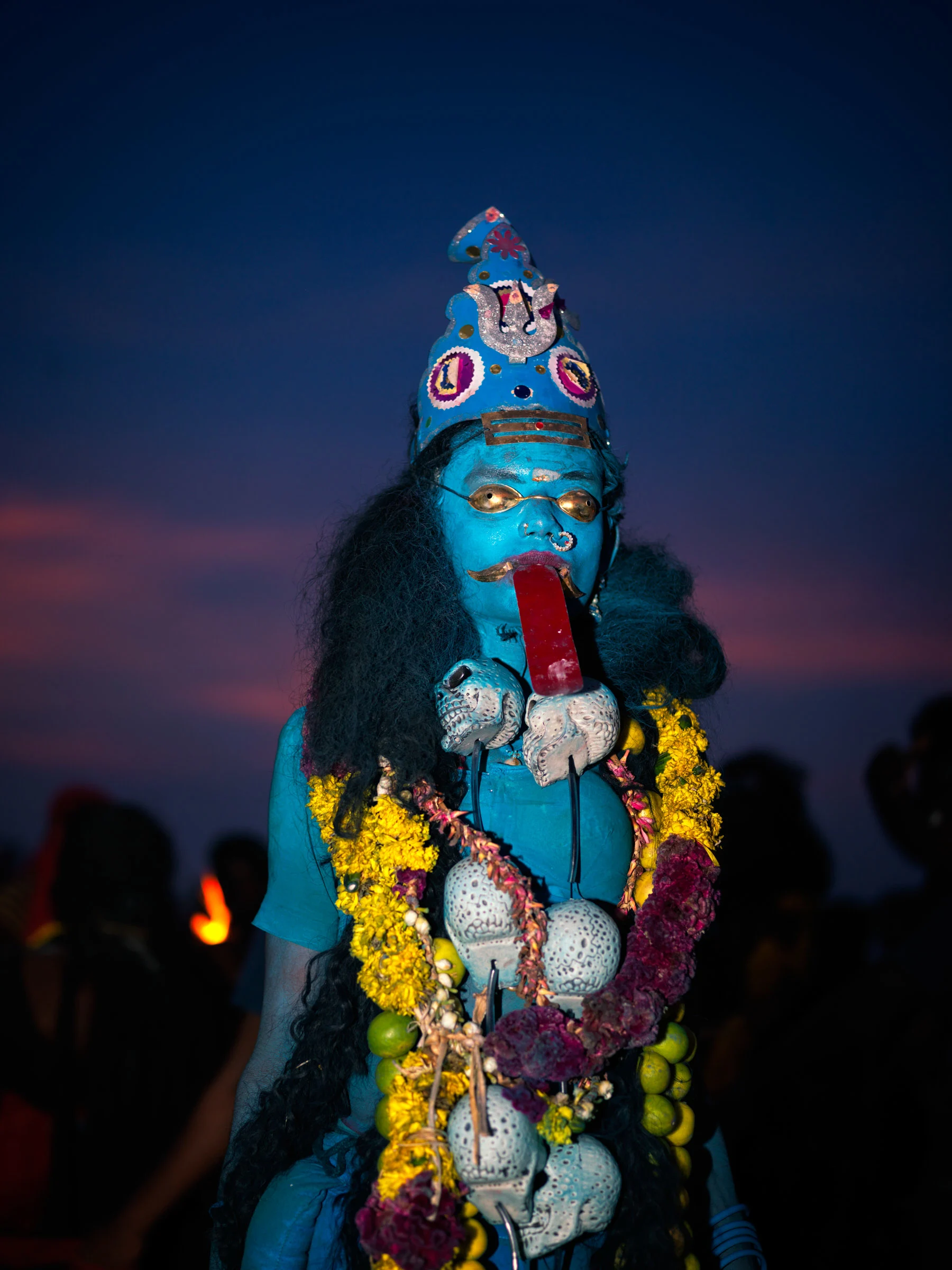
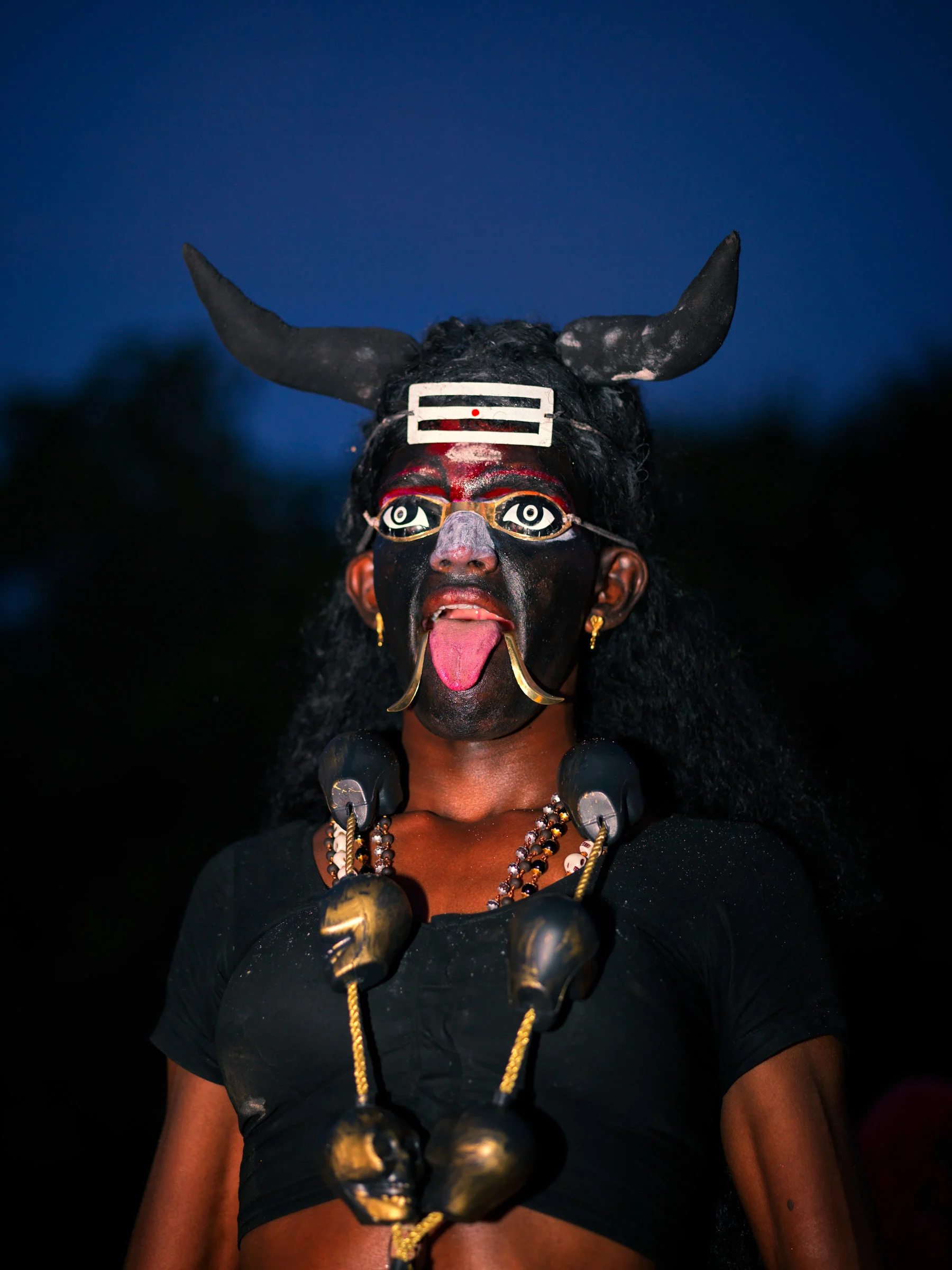
Unlike at Mardi Gras, where it’s mostly fun and frolic, this is more an act of reverence, and one needs to respect that.
Indeed, from his conversations with the locals, away from the throngs, he learned just how seriously these rituals were taken. The town was buzzing about a young man with a mysterious, disfiguring skin condition (thought to be the work of black magic by the man’s uncle), who was said to have been healed after he and his mother held vigil outside the temple for 31 days. (Kriator says a man claiming to have witnessed the miracle told him the young man has since married, and is now expecting his first child).
Thanks to his Tamil parents, Kriator knew enough of the local language to explain his intent and earn the consent of willing participants. But that’s about all he was able to communicate, not due to the language barrier, but because of the practical nightmare of holding a conversation amidst the chaos: “You can barely hear your own questions, let alone anyone else,” he explains.
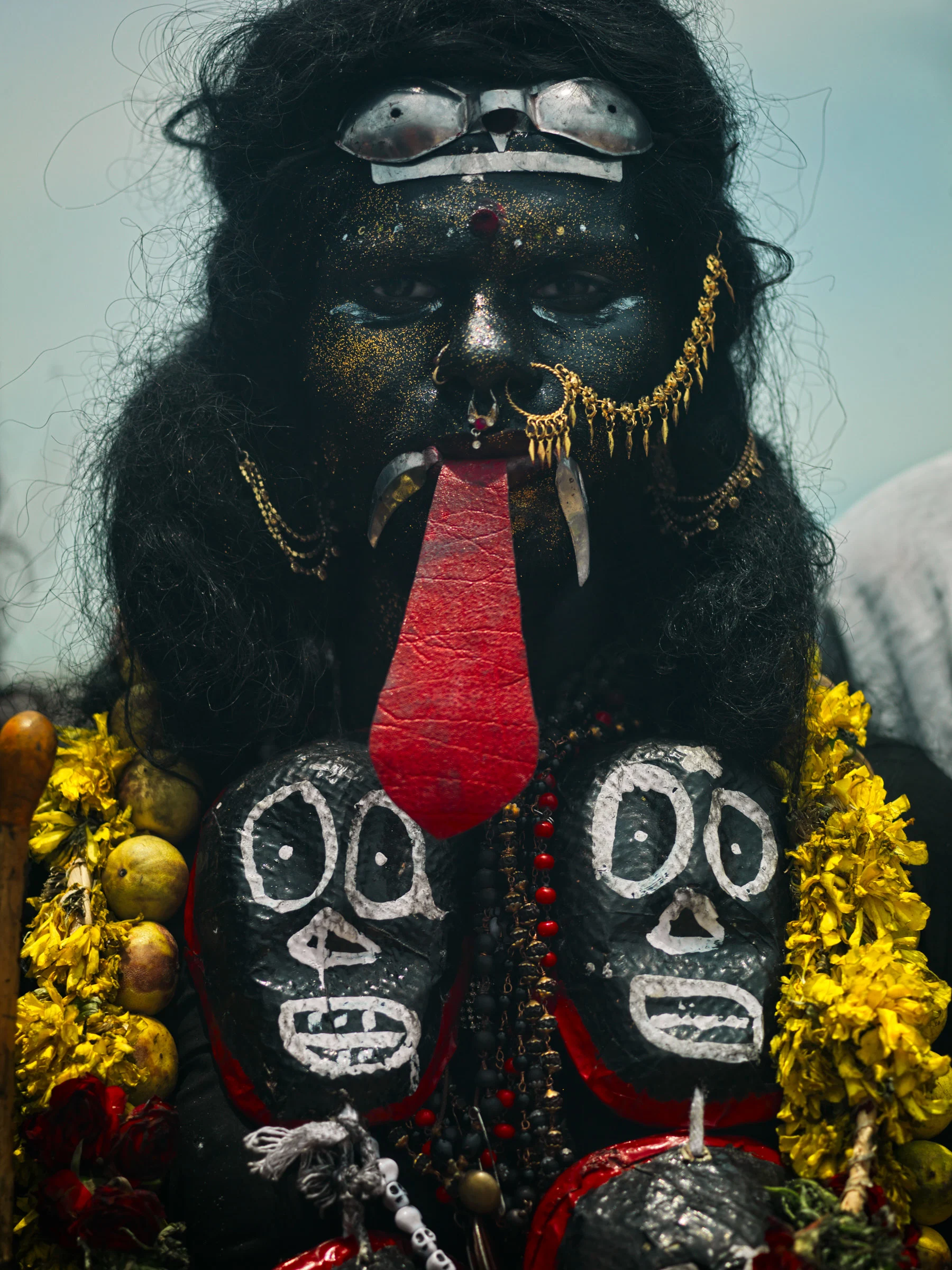
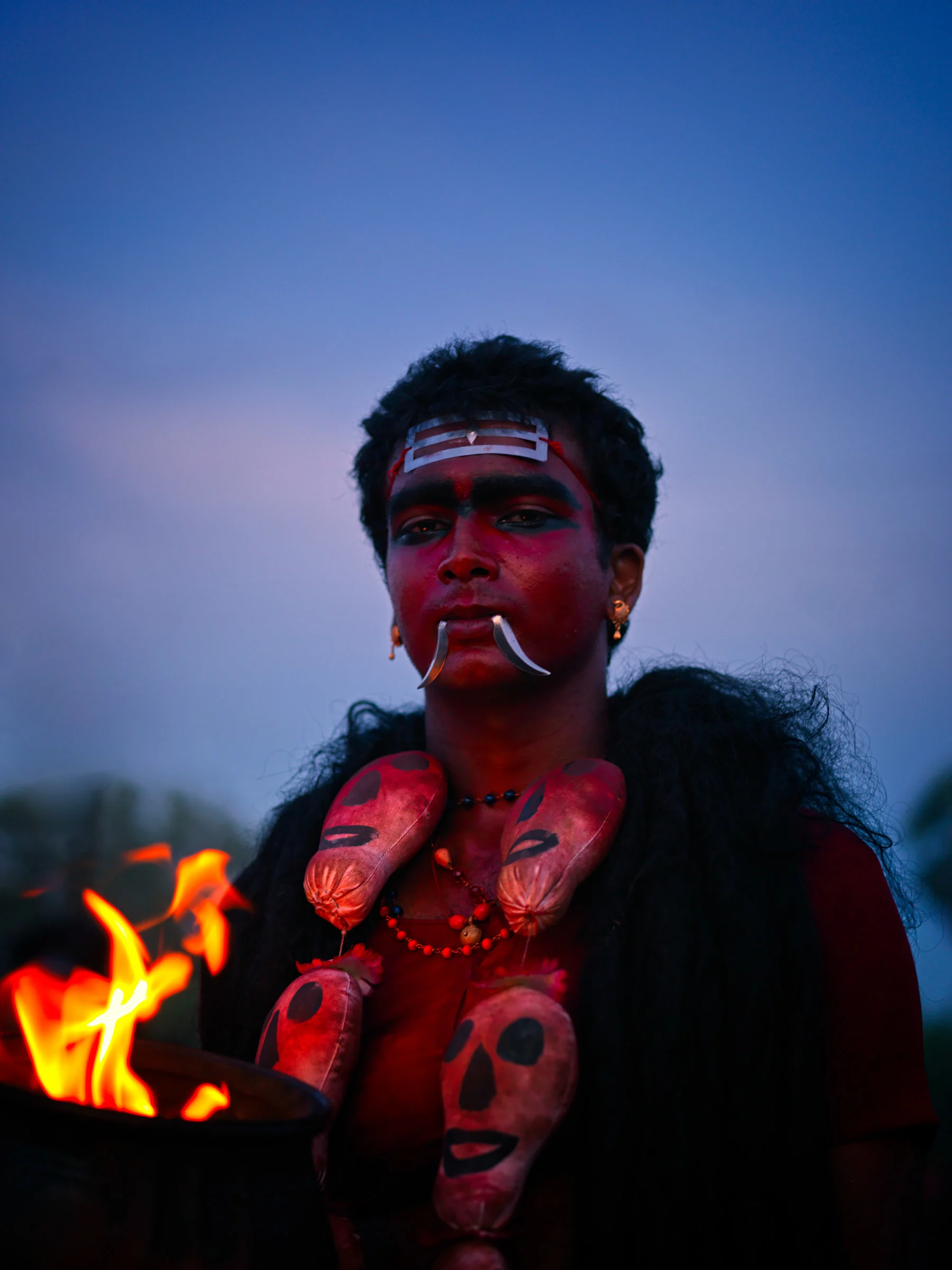

But for all of the logistical differences from his usual practice, Kriator says he approached the series with the same eye and approach. “Whether it's fashion, portraiture or documentary, for me personally, the subject is supreme…Those devotees were my subjects, not the occasion. They were literally my fashion models,” he says. Instead of clothes carefully chosen by stylists, he just had to work with the looks his “models” chose for themselves. “Each one then adds to the catalog for the larger narrative,” he adds.
In the artist statement for Pilgrims of Kulasai, Kriator mentions a local legend promising that no one returns from the festival empty-handed. He admits he has a lot to show for his journey. “I have a few hundred spectacularly beautiful images, not to mention an incredible experience that is firmly etched in my consciousness,” he says.
In sharing his photos, Kriator is continuing in that spirit of generosity. His photos, he believes, provide the uninitiated viewer with not only new insight into the particularities of the festival itself, but also an appreciation for the qualities he believes make India so special as a nation. “Faith, tradition, culture, beauty, fashion, colors, all fused into a perfect combination,” he says. “No other place in the world can (achieve this).”

